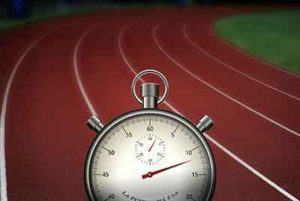Improving your ankle flexibility can have a dramatic impact upon your swim splits by reducing the amount of drag created by your legs. If your feet “hook” when you swim they act like parachutes at the end of your legs and will slow you down. In extreme cases, the hooking effect can actually produce negative propulsion. Continue reading “Improving Ankle Flexibility”
Author: Coach Scott
How a 20-Minute FTP Test Should Feel
 Have you ever finished a 20-minute FTP test and wondered if you had done it right? Had you really gone hard enough? Were you concerned you left something on the bike? Should you re-test? One of our athletes has provided a tongue-in-cheek look at how your FTP test should feel. Continue reading “How a 20-Minute FTP Test Should Feel”
Have you ever finished a 20-minute FTP test and wondered if you had done it right? Had you really gone hard enough? Were you concerned you left something on the bike? Should you re-test? One of our athletes has provided a tongue-in-cheek look at how your FTP test should feel. Continue reading “How a 20-Minute FTP Test Should Feel”
Goal Setting
Having a goal can be the first step towards achieving excellence. It can also help you deal with adversity and keep you focused. Here’s some thoughts on developing specific goals and making sure the goals are realized. Continue reading “Goal Setting”
Fundamentals of Freestyle
If you were to go to a swim meet or a triathlon you would quickly see that the good freestyle swimmers have several things in common. First, they all have very good body rotation and easily roll from side to side. You will note that their stroke is one fluid movement– Continue reading “Fundamentals of Freestyle”
When to Perform a Lactate Threshold Field Test

I received this email last night.
“. . . my training zones are from a field test I did two-years ago. At what point should I re-test? Should I be relatively “fresh” when I test? I lifted yesterday, and wrestling kicked my butt so I’m sore as heck. Wait till next week? Or does it not matter because it’s based on max effort?” Continue reading “When to Perform a Lactate Threshold Field Test”
How to Set Heart Rate Training Zones
Formulas aren’t accurate
If you have been training for any length of time, you have probably heard about ‘Training Zones.’
Do you know how to set your training zones? More specifically, do you know how to set your heart rate (HR) training zones? Continue reading “How to Set Heart Rate Training Zones”
Swim Threshold Pace – What is it?
After stroke technique, the next most important thing to improving your triathlon swim speed is understanding swim threshold pace (STP). You can swim hundreds of thousands of yards each month and if you don’t understand swim threshold pace, those training yards may not have been as effective as they could have been – and they may have been wasted time altogether. On race day, without an understanding of swim threshold pace, you will likely be swimming to fast – leading to lactic acidosis with the obvious negative effect; or swimming too slow – with the equally obvious negative effect. Continue reading “Swim Threshold Pace – What is it?”
How to Determine Your Swim Threshold Pace
Do your normal warm-up. Follow with a short build set to be ready to swim fast. Or you might consider our recommended warm-up.
Once you are thoroughly warmed up, you will do two time trials to establish your STP; one of 400 yards (or meters if you are in a long course pool) and one of 200 yards/meters. Continue reading “How to Determine Your Swim Threshold Pace”
Supercompensation
The human body strives to maintain homeostasis; a fancy term for balance. To maintain homeostasis, the body continually adapts to its environment. Training is simply the manipulation of the application of stress and the body’s adaptation to the stress in order to maintain a state of homeostasis. Continue reading “Supercompensation”
Sharks Don’t Eat People . . . Very Often
Does this sound familiar? You are swimming along, doing your workout and a piece of vegetation touches your leg. You PANIC! Knowing that a very big shark is about to take a bite out of you – never mind you are in a pool. I feel your pain, and I share your anxiety; dare I say fear. Continue reading “Sharks Don’t Eat People . . . Very Often”
